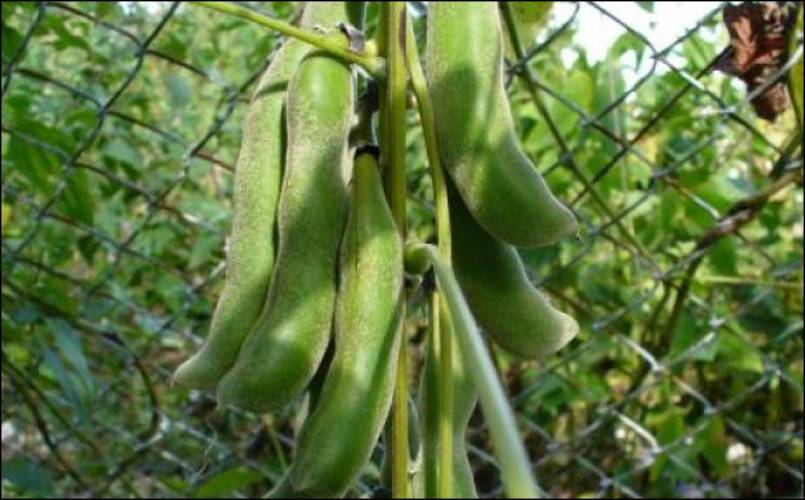 By Emily Okello
By Emily Okello
Bare earth slashes crop yields, making planting between crops, for instance by rotating velvet bean and maize crops, a cheap way to end the need for fertilizer and double commercial yields.
Known as ‘green manure’, there are a cluster of crops that radically improve the nutrition on soils between plantings. Grown as a single crop, intercropped or rotated with other cash crops, these sowings can increase yields by 100 per cent or more, fix and recycle nitrogen into the soil, kill 80 per cent of the Striga weed, and reduce pests and diseases.
One of the most powerful is Mucuna Pruriens (velvet bean), a legume with nitrogen fixing components that deliver approximately 50 to 100kg per hectare and can double succeeding yields when rotated with maize.
Related News: Best manure handling practices for maximum crop production
An experiment conducted by the International Information Center on Cover Crops (CIDICCO) in Benin showed that farmers who planted the velvet bean in depleted soils one month after sowing corn and let it grow into a dense cover during the second rainy season recorded a 10-fold corn yield from 200kg to 2,000kg per hectare.
Similarly, a 2019 scientific report found a more than 100 per cent increase in maize yield on velvet bean-maize rotation, reporting improved soil nitrogen, available phosphorus, exchangeable magnesium and effective cation exchange capacity (ECEC).
“After harvesting maize, the farm is always left bare for some time, destroying the soil fertility. Farmers can plant the green manure as a cover crop to protect the microorganism and other living organisms in the soil from being scorched by the sun. Direct sunlight degrades nutrients like nitrogen, which are volatile,” said Samuel Ndungu, program manager of the Kenya Organic Agriculture Network.
Green manure requires no additional capital after buying the very first seeds in that a farmer can produce and resow their own future seeds to maintain the nutrients’ supply for the next crop. The plants can be cut and left on the soil surface as a mulch, thus protecting the soil against leaching, soil erosion, excess sunlight, and weed infestation. But they improve soils the most when they are dug in the soil to add extra organic matter.
Related News: Fortified composite manure increases harvest two-fold
Another powerful aide to soil fertility is soybeans, which fix 22kg of nitrogen, produce 2.5 tonnes of forage, and reduce Striga weed infestations, according to the Food and Agriculture Organization (FAO). Indeed, most legumes suffocate and kill Striga, reducing labour costs for weed control.
Across all crops, soil infertility is one of the largest factors hampering agricultural productivity in Kenya. Some of the soil types used for agriculture across Kenya are ferralsols, acrisols, luvisols, vertisols, nitisols, and lixisols. These soils contain nutrients like calcium, phosphorus, nitrogen, and potassium that aid in plant growth, but a shortage in supply leads to nutrients deficiency that can kill the plant root.
Thus, while some soils have the physical capacity to hold moisture, they lack enough phosphorous and nitrogen to maintain the soil nutrients. For this reason, farmers use inputs such as chemical fertilizers and/or green manure to replenish these nutrients.
However, crippled by a myriad of challenges such as the outbreak of pests and diseases, soil erosions, and the high cost of inputs like fertilisers, few farmers have access to the financial resources to buy the mineral fertilisers, leading to low soil fertility and reduced yields: in what becomes a vicious cycle of agricultural poverty.
But green manure offers a new way forward for previously low-yield farmers, by improving the soil structure and adding nitrogen. Once sown, it extracts nitrogen from the atmosphere and fixes it in the roots of the legumes, thereby increasing the soil's physical, chemical, and biological properties.
Commonly used non-edible green manures include purple vetch, desmodium, sunhemp (clotararia breviflora) and mucuna pruriens (velvet beans). While edible legumes include common beans, French beans, cowpeas, soybeans, groundnuts, and pigeon peas.
“Farmers can plant edible crops as green manures if they have a better understanding of how to incorporate the crops, but I wouldn’t advise on this. Green manuring works best when the crop is planted and dug back into the soil at the flowering stage to release nutrients for the subsequent crops,” Ndungu said.
He explains that intercropping maize and desmodium, drives stem borer away, stops Striga weeds and fixes up to 100kg nitrogen.
Write comment (0 Comments)



 By Fredrique Achieng’
By Fredrique Achieng’ By George Munene
By George Munene










